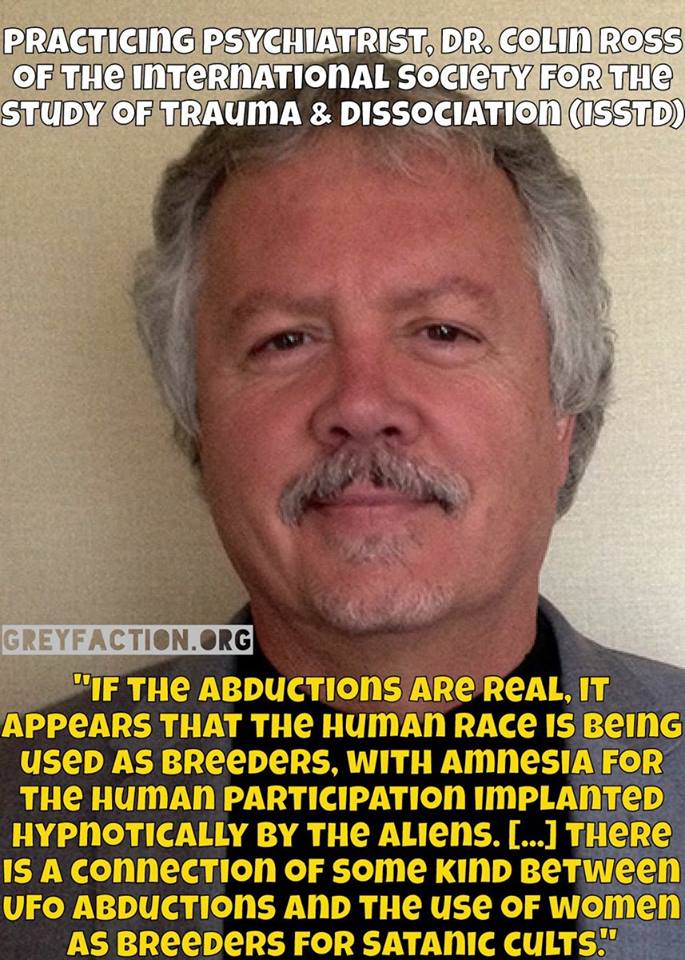
Psychiatrist Colin Ross, considered one of the foremost “experts” in the incestuous field of dissociative disorders, has some interesting views. He believes he can shoot beams out of his eyes, that extraterrestrials may be breeding with humans, and that the CIA’s MKULTRA experiments are ongoing.
Predictably, he also has interesting views regarding dissociative identity disorder (DID). For one, he has argued that most or all DID patients are victims of aforementioned CIA mind control experiments. But he also says that nobody — including DID patients, who are diagnosed as having more than one personality — can actually have multiple personalities.
Around 44 minutes into the presentation — in which he erects laughable straw men before summarily knocking them down with Dril-like indignation — Ross responds to a common critique of DID: It is impossible to have more than one personality in the same body.
His reply? “Well hello, of course it’s not.” He goes on to explain how DID is “real and it’s not real — both things are true. It’s not literally, concretely real. So if we took an x-ray of your head we wouldn’t see all these little skeletons in there, and if there’s a bunch of little people this big with bony skeletons running around in your brain, your brain would be destroyed.”
It’s not the only time he’s made the bizarrely comical choice to refer to alter personalities as “little skeletons.” In the video below, around 36 minutes and 30 seconds in, he makes a similar comment.
Skeletons aside, why is this interesting?
For one, the claim that people likely can’t literally have multiple personalities — but can have the psychological experience of such — is largely aligned with our own position on the matter, as explained in our Frequently Asked Questions section.
More interesting is the fact that this position puts Ross in disagreement with the 5th edition of the Diagnostic and Statistical Manual of Mental Disorders (DSM-5), which spells out the signs and symptoms necessary for a clinician to make a diagnosis.
The very first of the diagnostic criteria, as reproduced from the DSM-5 here, is the following (emphasis added):
Disruption of identity characterized by two or more distinct personality states, which may be described in some cultures as an experience of possession. The disruption of marked discontinuity in sense of self and sense of agency, accompanied by related alterations in affect, behavior, consciousness, memory, perception, cognition, and/or sensory-motor functioning. These signs and symptoms may be observed by others or reported by the individual.
Ross’ claim that an individual cannot “literally” have multiple personalities, but can have the psychological feeling of such, is not reflected in the DSM-5 criteria. Indeed, the diagnostic criteria require that a clinician assess that it is an objective fact that the patient has more than one personality state. If it were merely referring to psychological constructs, it would say as much.
This begs the question: if Ross doesn’t believe anyone can have more than one personality, has he been misdiagnosing his patients this whole time? His former patient Roma Hart, who sued Ross claiming he implanted false memories of Satanic ritual abuse and extraterrestrial breeding tied to an incorrect diagnosis of multiple personality disorder, would likely have some thoughts on this.
